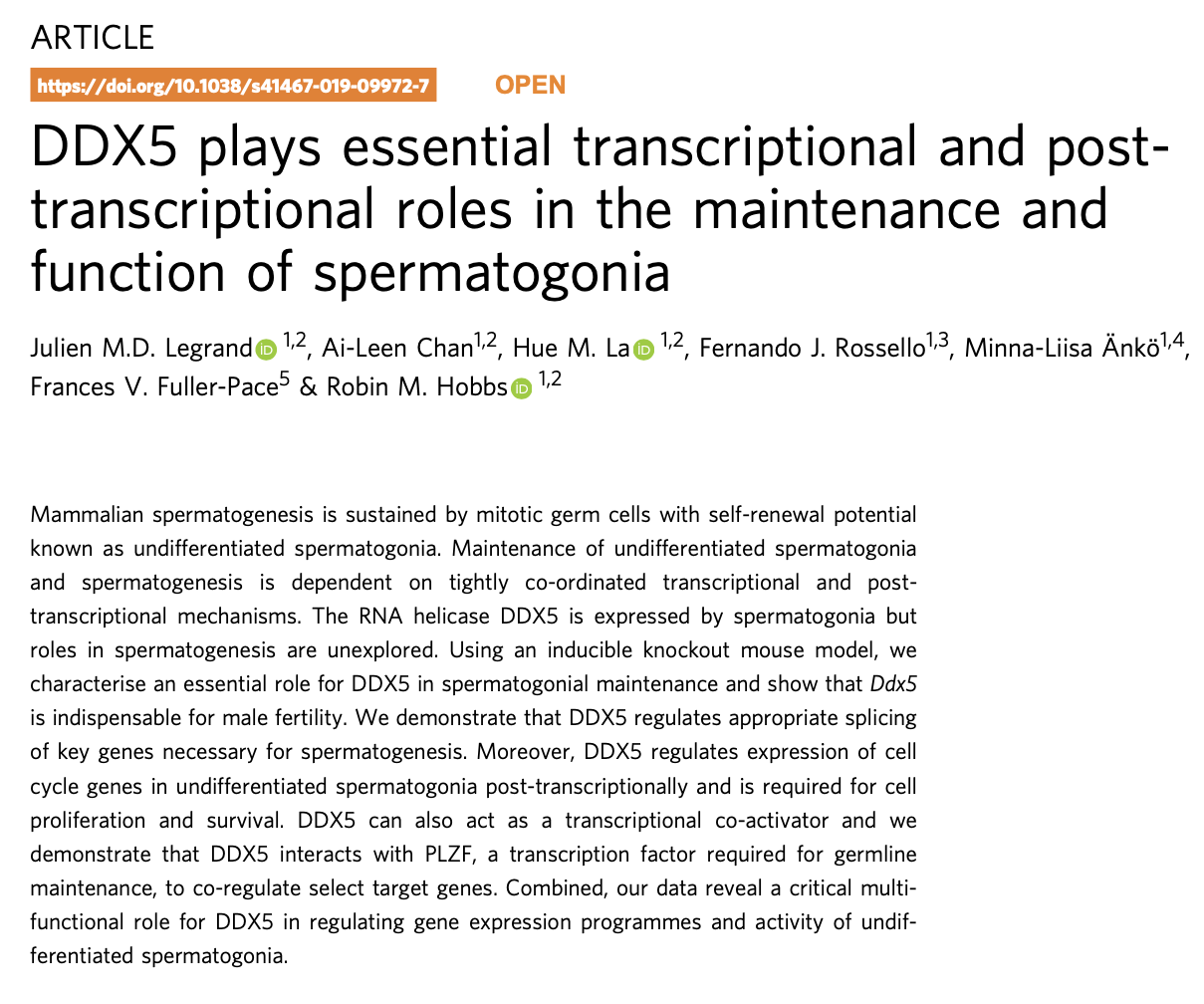
- February 12, 2021
DDX5 plays essential transcriptional and post-transcriptional roles in the maintenance and function of spermatogonia
Julien M.D. Legrand, Ai-Leen Chan, Hue M. La, Fernando J. Rossello, Minna-Liisa Anko, Frances V. Fuller-Pace, Robin M. Hobbs|Australian Regenerative Medicine Institute, Monash University, Melbourne, VIC 3800, Australia; Development and Stem Cells Program, Monash Biomedicine Discovery Institute and Department of Anatomy and Development Biology, Monash University, Melbourne, VIC 3800, Australia; University of Melbourne Centre for Cancer Research, The University of Melbourne, Melbourne, Victoria 3000, Australia; Centre of Reproductive Health and Centre for Cancer Research, Hudson Institute of Medical Research and Department of Molecular and Translational Science, Monash University, Melbourne, VIC 3168, Australia; Jaqcui Wood Cancer Centre, Ninewells Hospital and Medical School, University of Dundee, Dundee DD1 9SY, UK|Nature Communications|2019|10:2278 doi.org/10.1038/s41467-019-09972-7
Mammalian spermatozoa are produced through a process of spermatogenesis that is maintained by undifferentiated spermatogonia, a population of cells with self-renewal potential. In homoeostatic testis, only a proportion of undifferentiated spermatogonia function as stem cells, while the remainder act as differentiation-committed progenitors. Maintenance of undifferentiated spermatogonia and spermatogenesis is dependent on tightly co-ordinated transcriptional and post-transcriptional mechanisms. The DEAD box helicase 6 (DDX5) is an ATP-dependent RNA helicase originally described as important for unwinding of RNA secondary structure, but it is now known to be involved in multiple aspects of RNA processing including splicing, mRNA export, transcript stability, rRNA biogenesis and microRNA processing. Previous studies have suggested a role for DDX5 in the male germline, where is it specifically expressed in human spermatogonia. Despite past findings showing that DDX5 is expressed by spermatogonia, its role in spermatogenesis is currently unknown. In the study, an inducible knockout mouse model was used to explore the role of DDX5 in spermatogonial maintenance, where gene expression analysis was performed on Mic qPCR Cycler. Further analysis by ChIP-seqencing and immunochemistry methods were explored. It was demonstrated that DDX5 regulates appropriate splicing of key genes necessary for spermatogenesis and regulates expression of cell cycle genes in undifferentiated spermatogonia post-transcriptionally. Thereby DDX5 is essential for cell proliferation and survival. It was also shown that DDX5 interacts with PLZF, a transcription factor required for germline maintenance, to co-regulate select target genes. To conclude, this study showed that DDX5 is a multidimensional regulator of gene expression in spermatogonia and an essential for male fertility.